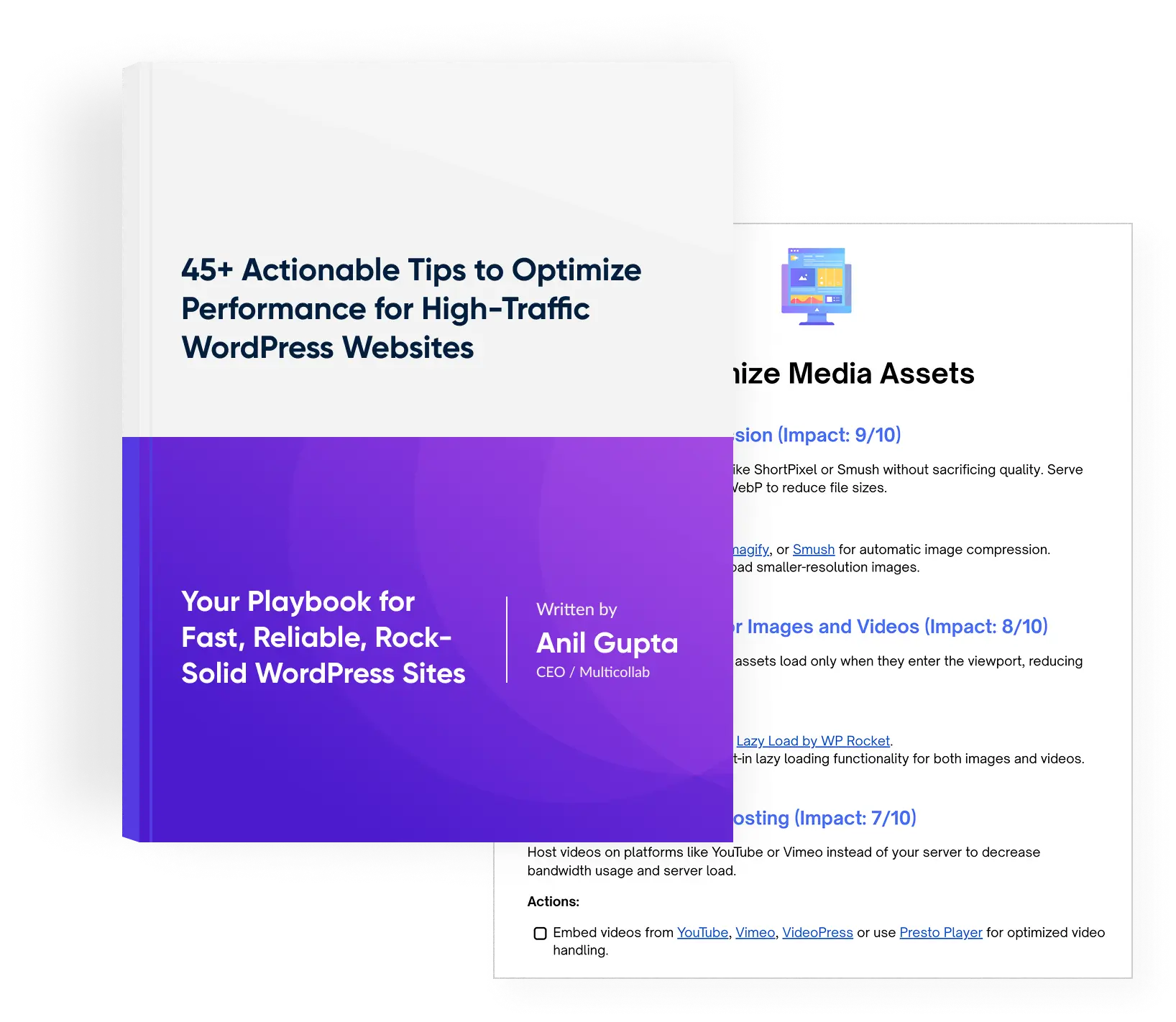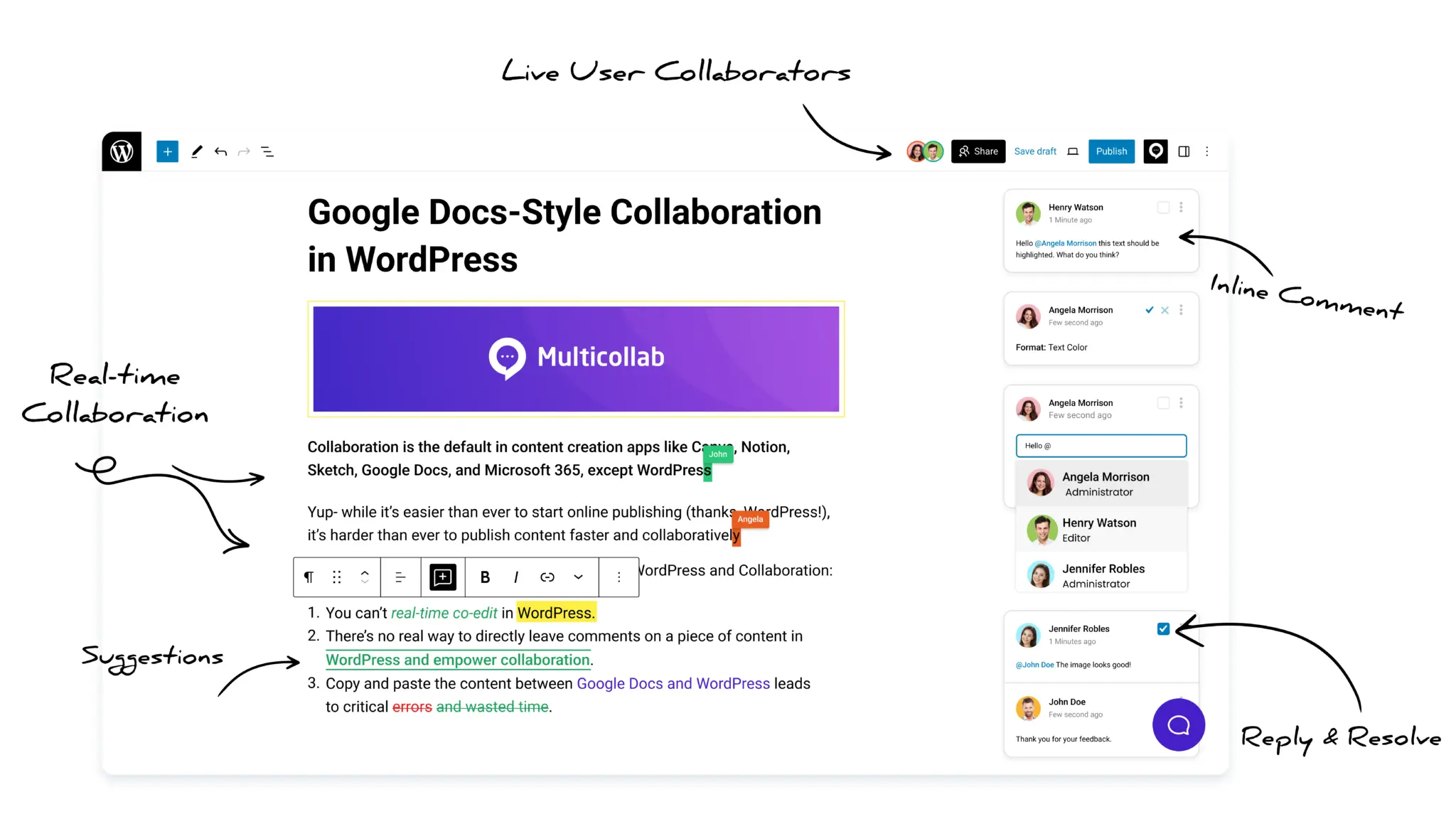Table of Contents
Publishing teams today are not just writing content. They are planning it, reviewing it, optimizing it for search, formatting for different devices, and distributing across channels. And all of this happens with people working in different places, using different systems, sometimes even across time zones.
What once was a simple editorial process has become a complex content operation. Not just great ideas and clean copy, it’s also about keeping teams in sync, hitting deadlines, and making sure your content reaches the right audience.
To do this well in 2025, you need to operate as a modern publishing team. You need tools that support how publishing works today. This guide will walk you through ten tools that help modern publishing teams collaborate better, move faster, and stay very much consistent.
What makes a publishing tool essential in 2025?
With so many apps available, not everything qualifies as essential. For tools that directly improve how publishing teams work, they should:
- Collaborate more smoothly across roles: In most teams, writers, editors, designers, marketers, and developers all touch content at different stages. A good tool helps these roles communicate clearly, leave feedback in context, and stay aligned even when working asynchronously.
- Speed up the production process: Publishing delays often happen when people are waiting for approvals, for assets, or for someone to copy-paste content between systems. The right tools remove bottlenecks and automate repetitive steps so your team can publish faster.
- Maintain high content quality: Quality suffers when workflows are messy. Essential tools help ensure that content meets your standards. They support version control, catch SEO and formatting issues early, and make it easy to review and improve drafts.
- Integrate easily with your CMS: No matter how powerful a tool is, if it doesn’t work with your main CMS, it will cause more trouble than it’s worth. The best tools fit naturally into your existing publishing workflow and reduce the need for workarounds or duplicated effort.
Top 10 tools for modern publishing teams in 2025
These are the tools that reduce friction and help your team focus on what really matters: creating great content.
1. Multicollab: Real-Time editorial collaboration in WordPress
If your team works with WordPress, you probably still use Google Docs to draft and review content. Then someone manually pastes the final version into WordPress. It’s a broken process.
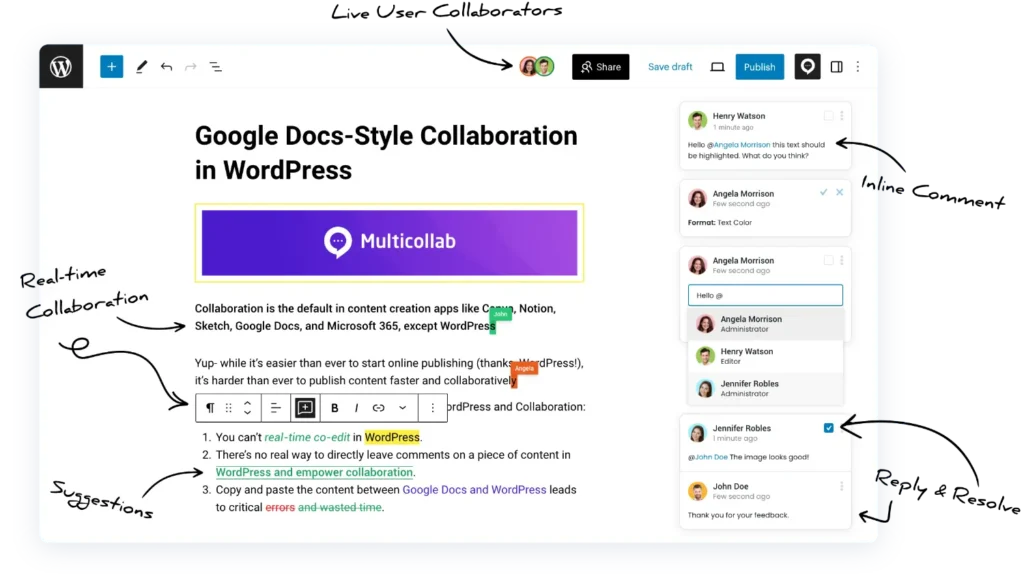
Multicollab solves this by bringing real-time comments and suggestions directly into the WordPress block editor. You can tag teammates, leave feedback on specific blocks, and approve changes—all without switching platforms.
- Real-time co-editing in Gutenberg
- Inline comments on text and media blocks
- Suggest edits (like Google Docs)
- Guest collaboration without WordPress login
- Email & Slack notifications for updates
- Attach files to comments
- Role-based permissions for team control
- Activity tracking and reports
- Multilingual interface
For content managers, this means less back-and-forth. For writers, it means faster approvals. And for teams, it means everyone stays on the same page.
2. CoSchedule: Content calendar and marketing hub in one
CoSchedule isn’t just a calendar. It’s a full system that lets you plan, assign, schedule, and track all your content in one place. Whether it’s blog posts, emails, or social media campaigns, CoSchedule gives your team clarity on what’s happening and who’s responsible for what.

If you’re a content lead managing multiple writers and deadlines, having a drag-and-drop visual calendar can save hours each week. But the real benefit is how it brings structure to your publishing efforts. You can map out campaigns, plan themes across weeks or months, and reduce the daily guesswork that slows down teams.
CoSchedule also improves accountability. Each task is assigned clearly, with due dates and priorities. This helps avoid missed deadlines and ensures everyone understands their role in the publishing process. For editorial directors and marketing heads, it becomes easier to spot roadblocks early and keep content moving forward.
The built-in analytics tools allow you to see how content is performing once it’s live. This feedback loop helps your team refine what they publish and make smarter decisions for future planning.
3. Wordable: Push Google Docs to WordPress without formatting issues
Copy-pasting from Google Docs to WordPress often breaks formatting, removes images, and forces you to spend more time fixing the post than writing it.

With one click, Wordable uploads your Google Doc to WordPress, keeping formatting, links, and images intact. It’s a huge time-saver, especially for teams that rely on external writers or editors.
For publishing teams, this eliminates the repetitive task of cleaning up content before going live. It also reduces friction between writing and publishing phases, allowing editors to focus on quality checks instead of formatting errors. When you’re managing dozens of articles each week, small efficiencies like this add up quickly.
4. Contentful Studio: Visual content management for headless publishing
Contentful is a headless CMS, which means it separates your content from your website design. This is great for scalability, but it can be hard for editors to work with.
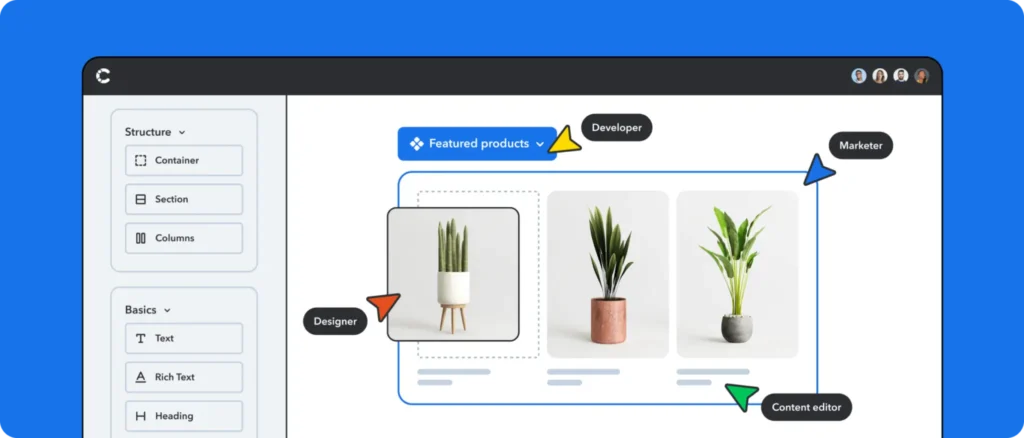
That’s where Contentful Studio comes in. It gives editors and marketers a user-friendly interface to manage content without writing code. With its Compose and Launch features, teams can group content into campaigns and schedule them for release.
For publishing teams working across platforms, this tool simplifies a complex process. It allows teams to plan, preview, and manage content in one place, even when that content is being used on multiple sites or apps. It bridges the gap between technical and non-technical team members, making collaboration easier and more efficient.
5. Sanity Studio: Structured content with real-time collaboration
This is another headless CMS, and its Sanity Studio interface is a favorite among modern content teams. What makes Sanity different is how flexible it is. You can define exactly how your content should be structured, then let your team work on it collaboratively in real time.
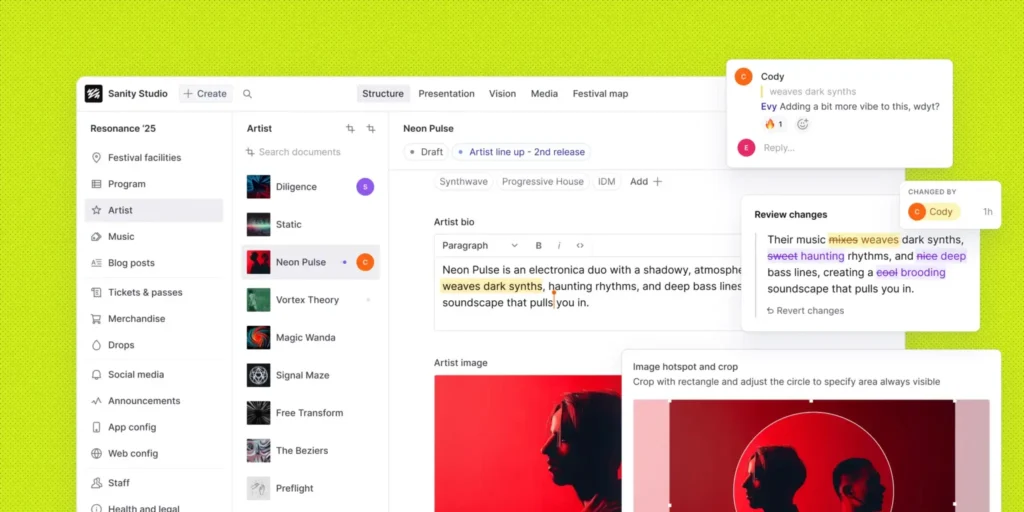
It’s especially helpful for teams that need a custom content model, like publications with categories, tags, authors, and recurring formats. With Sanity Studio, you don’t just write content, you shape how it lives across your site or app.
For publishing teams, Sanity encourages better planning and consistency. Everyone can see the content structure and understand how their piece fits into the bigger picture. Real-time collaboration also prevents version conflicts and keeps everyone on the same page.
6. Ghost’s built-in newsletter and membership tools
Ghost is a publishing platform built for independent creators and small media brands. One of its strongest features is how it combines content, email, and membership tools into a single system.
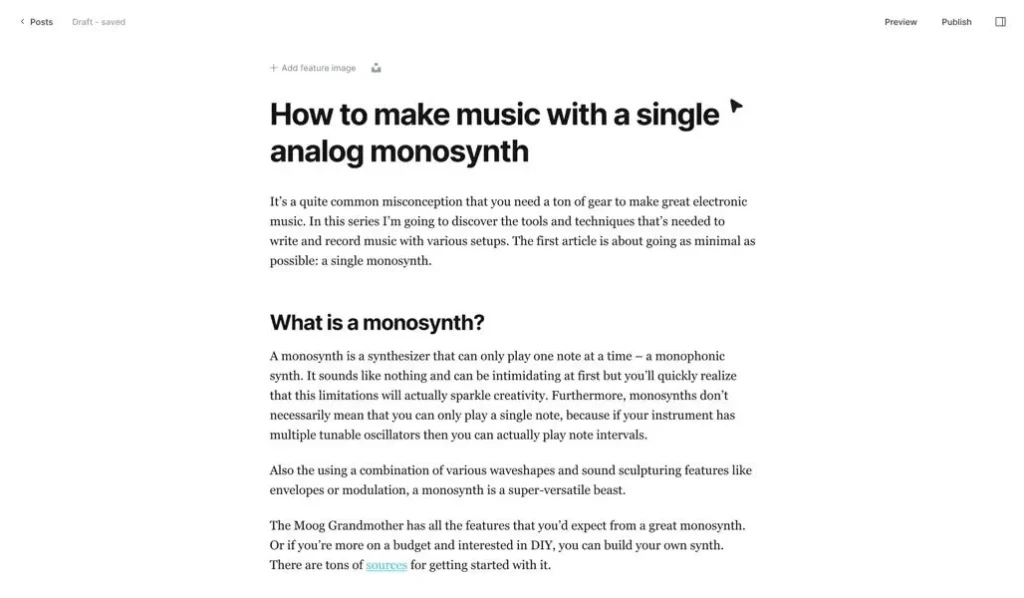
You can publish a post, email it to your subscribers, and gate it behind a paywall, all from the same dashboard. There’s no need to connect five different tools.
For small publishing teams, this reduces tech complexity and keeps all your engagement tools in one place. It’s easier to build and maintain a reader base, especially when your team doesn’t have dedicated developers or marketing staff. You can focus on creating and sharing great content, without worrying about integration issues.
7. Thunder (Drupal): A publisher-focused Drupal distribution
Drupal is a powerful CMS, but it takes time to configure. Thunder is a pre-packaged version of Drupal designed specifically for publishers.
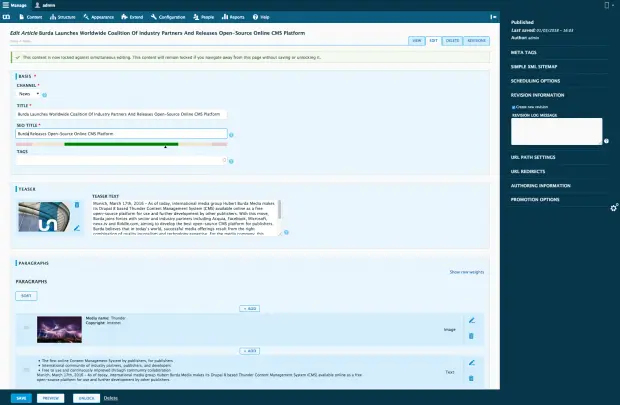
It comes with built-in tools like scheduling, multimedia management, SEO controls, and flexible content types. It’s used by some of the world’s largest media companies.
For publishing teams already working with Drupal, Thunder reduces setup time and gives you a solid starting point. It standardizes many of the features publishers need, which means less custom development and more time spent on content strategy.
8. Preflight plugin for sanity: Catch mistakes before you publish
When publishing at scale, small mistakes can add up. Broken links, missing metadata, and duplicate titles hurt SEO and user experience.
The Preflight plugin for Sanity runs a checklist before your content goes live. It flags issues like missing alt tags, broken links, or empty meta descriptions.
For editors and quality assurance teams, this tool acts like a safety net. It allows them to enforce standards without having to manually inspect every page. This is especially useful in fast-paced publishing environments where content is being pushed out daily or even hourly.
9. AIOSEO (WordPress): Simple SEO for every page
Search visibility is key to growing any publication. AIOSEO is one of the most complete SEO plugins available for WordPress.

It guides writers and editors through optimizing each post with on-page checks, metadata controls, schema markup, and readability scores.
For publishing teams, AIOSEO helps standardize SEO practices without requiring deep technical knowledge. It creates a checklist for contributors to follow, which helps maintain consistency across all published content. That means better search rankings, more traffic, and a stronger editorial impact.
10. Zapier: Automate repetitive publishing tasks
Publishing involves a lot of repeated actions. Notifying a team when a post is published. Cross-posting to social media. Adding articles to spreadsheets. Zapier helps you automate those tasks.
It connects your CMS to tools like Slack, Airtable, Google Sheets, and Trello. You can set up simple workflows that run automatically when new content goes live.
For publishing teams, automation saves hours each week and reduces the chance of human error. It keeps things running smoothly behind the scenes so your team can focus on higher-value work—like strategy, editing, and content creation.
Conclusion: Modern publishing is a team sport
Modern publishing is about producing great content consistently, efficiently, and collaboratively. As your team grows, you can’t afford to rely on disconnected tools and scattered workflows.
The tools in this guide aren’t just helpful add-ons. They’re foundational systems that help content teams stay focused, aligned, and ready to scale.
Now is the time to take action. Look at your current setup. Identify where your team is losing time or struggling to stay in sync. Choose one or two tools from this list that address those pain points—and start testing.
The best publishing teams don’t just create content. They build systems that make great content possible every day. Start building yours.



